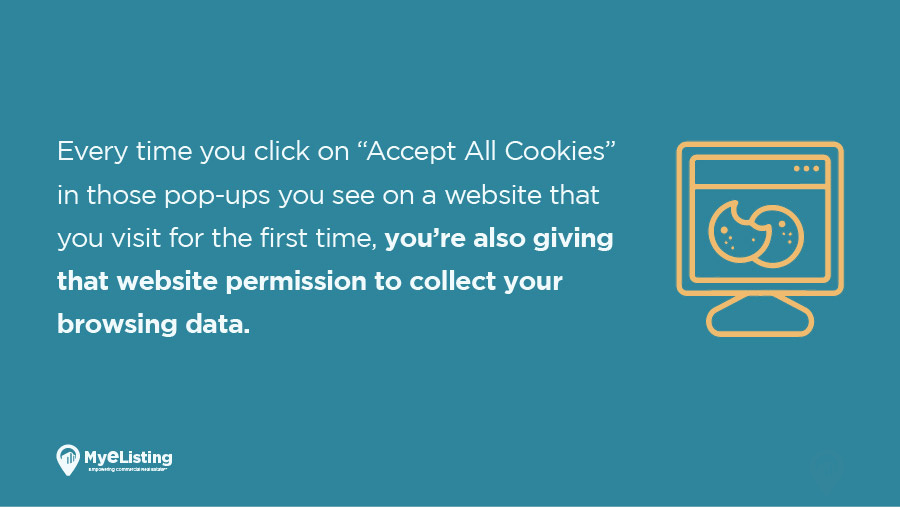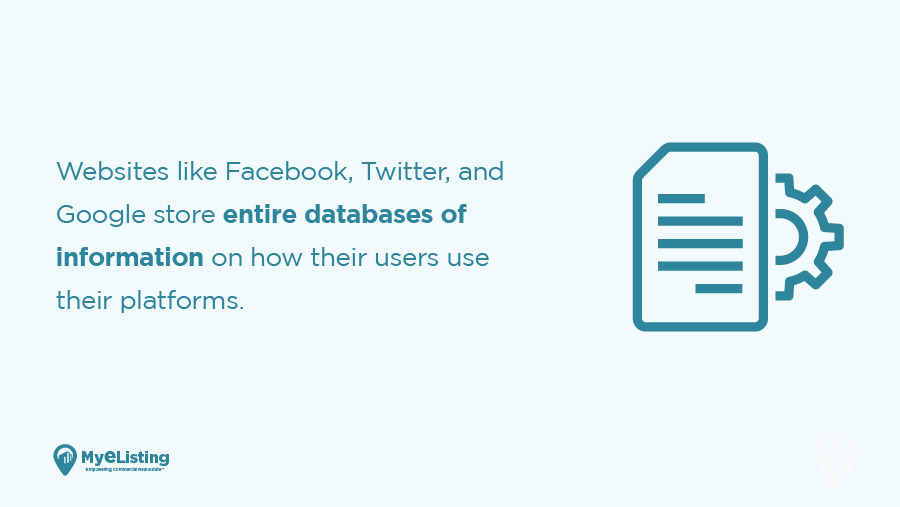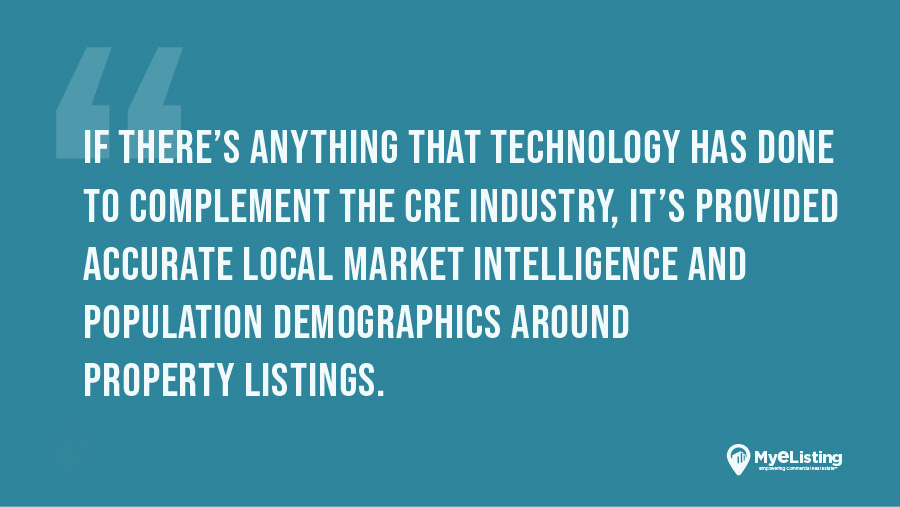Making Smarter CRE Decisions With Accurate Market Data

Specializes in providing actionable insights into the commercial real estate space for investors, brokers, lessors, and lessees. He covers quarterly market data reports, investment strategies, how-to guides, and top-down perspectives on market movements.

In today’s age of fast-paced information and incredible convenience, big data is dominant, and everybody knows it.
This is especially true in the technology sector, where big tech companies like Facebook are storing nearly 100 million gigabytes of data on a daily basis.
But that data collection isn’t all for naught: Whether you agree with its practice or not, it does (or is supposed to) serve a greater purpose: To make the end-user’s life just a little bit easier.
How exactly does that work? Let’s take a look.
How Do Businesses Collect Data These Days?
Before we dive into the what of this scenario, let’s take a look at the how; as in, how exactly do these tech companies and websites collect and monetize user data?
Let’s start with the lowest-hanging fruit.
They Ask You For It

Have you ever had to enter your email address on a website in order to receive some sort of report or exclusive offer? Or have you ever filled out a customer satisfaction survey online after you used a product or service?
These are two very common ways in which companies will ask you for your personal data. Another thing: Every time you click on “Accept All Cookies” in those pop-ups you see on a website that you visit for the first time, you’re also giving that website permission to collect your browsing data.
They Log It

Websites like Facebook, Twitter, and Google store entire databases of information on how their users use their platforms. This may include anything from how much time you spend using their platform to everything that you click on, type, like, share, and more.
To advertisers especially, this is very valuable information: A mortgage lender who wants to run ads on Facebook can very easily target their ads to an audience of users looking to purchase a home instead of blindly running advertisements in the hopes that they reach the right people.
While it may sound sketchy, ask yourself: Would you rather see ads that have some sort of relevance in your life, or would you rather see ads that have nothing to do with your likes and interests?
They Buy It
Websites that have collected and stored vast amounts of user data often make that information available for purchase so that, should those same users visit your own website, you know what to expect, what they do, how they browse, and more.
This creates another ideal environment for advertisers looking to run ads to specific cohorts of people: If you buy user data on internet users who, say, research apartments for rent the most, advertisers selling apartment-related products and services may be willing to buy space on your website at premium rates, quickly reimbursing you for the money you spent to get that data in the first place.
See how this is all starting to come together? Now let’s look at how big data collection ties into the world of commercial real estate.
How Big Data Complements Commercial Real Estate Decisions

If there’s anything that technology has done to complement the CRE industry, it’s provided accurate local market intelligence and population demographics around property listings.
In other words, if you’re researching, say, office buildings for sale in Houston, commercial real estate listing sites may also provide you with information about Houston’s office space market, population demographics such as average household income, comparable properties, and more.
This information, when available, paints a more complete picture around your purchase and may help you:
- Forecast future market activity;
- Time your eventual sale of the property;
- Predict foot traffic in the area;
- Place your business in the most ideal talent pool; and
- Gauge local employment and education levels.
The caveat here, however, is that most of these websites will charge you for access to this immensely helpful data, and this charge ain’t no bargain price, either.
The good news is that MyEListing.com doesn’t charge its users a thing for this information, and the data we provide our users, whether investors, sellers, lessors, lessees, brokers, or just your average Joe curious about commercial real estate, paints a nearly complete picture of the local markets, whether primary or secondary, within which our listings reside.
Example: How Market Data Helps Retail Businesses Relocate Successfully
Say you’re the owner of John’s Jolly Convenience Store, and you’re looking to relocate your business to Dallas, TX.
In order to make this decision successful, you might surmise that you’d need to know:
- The shopping habits of locals in your new area;
- Average household incomes;
- Levels of employment; and
- Population levels.
Looking at a property listing of a retail building for sale in Dallas, we not only see comprehensive information about the property itself, but we can also get a good idea of local household incomes, employment levels, population levels, the total number of housing units in the area, and more.
Collecting, Analyzing, and Using This Market Data
Since John’s Jolly Convenience Store relies on foot traffic, we can see that, within one mile of this property that we’re looking at buying for our new retail location:
- The average household income is about $90,000 annually;
- The median age of the population is about 43;
- There are about 2,700 housing units;
- The civilian workforce is comprised of about 4,000 workers; and
- There are about 1,600 married couples in the area, over 50% of the population within this one-mile radius.
Therefore, using this data, we can make the following conclusions:
- Our most frequent visitors will likely be middle-aged married couples;
- Our most frequent visitors will likely have discretionary income to spend; and
- Our most frequent visitors will likely be employed.
This is just one example of how accurate local market data can complement commercial real estate decisions in extremely powerful ways.
Do your research, stay diligent, and happy investing.
List & Browse Commercial Real Estate for Free on MyEListing.com!
List and browse commercial real estate for free right here on MyEListing.com by signing up for a free account.
From there, you’ll get unlimited, free access to all our listings, accurate local market intelligence, customized property type alerts, and much more.
Article Search
Share
All Article Categories








